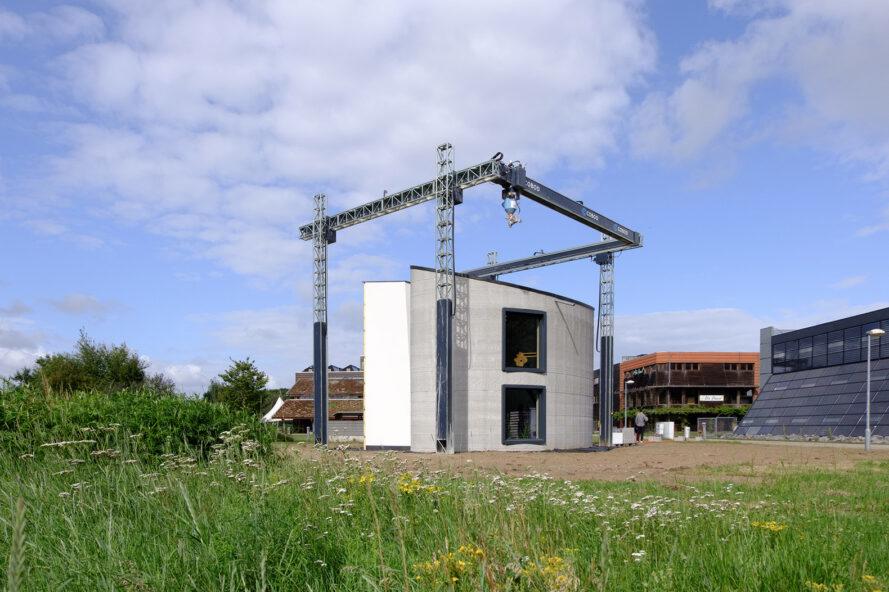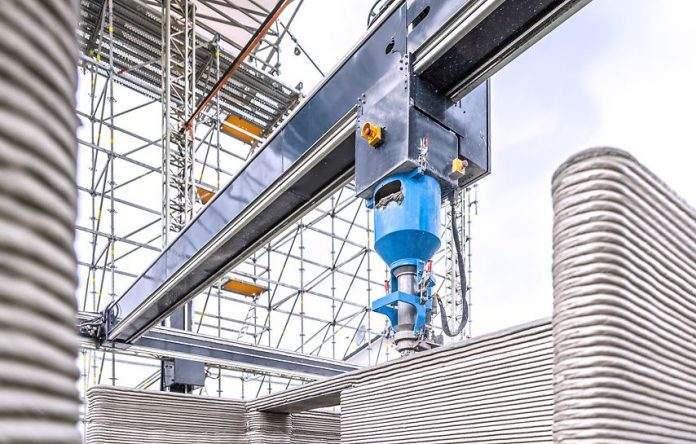With 3D printing on the rise, could it be a possible solution to help the housing crisis in the UK? Build Warranty explores
Humans have a long history of innovation, but one of the biggest breakthroughs we have seen bursting onto the world scene is the concept of 3d printing or Additive Manufacturing (AM) first surfaced in the 1980 and has since then promised the emergence of advanced technologies. Changes in the manufacturing and construction industry are inevitable with increasing demands for more sustainable and efficient processes for transformational structures/designs.
In recent years, approaches to process automation have pushed beyond limits in the applications of robotic solutions to improve productivity, quality and utilisation of digital technology that can be implemented in the construction of buildings across the UK. This technology has the potential to reduce several unprecedented challenges, including the lack of skilled workers which is driving up costs of labour, UK housing shortage, and the effects of climate change.
How does 3D Printing work in construction?
Three-dimensional (3D) printing, also known as additive manufacturing or rapid prototyping, is the process of creating three-dimensional objects from digital files. Working on one layer at a time, 3D printers can create complex shapes and higher-resolution parts at a speed that rivals traditional manufacturing methods.
3D printing is a technology that is being used increasingly in the construction industry. It involves using a 3D printer, one technique usually used is a gantry system. This type of system is ideally used for constructing large projects, as it offers a stable frame setup of four columns and three beams, allowing movement along a horizontal axis. In other words, a gantry is a structure on a 3D printer that supports a sliding component.

As the gantry head moves along the beam in the space according to a pre-designed route programmed by a program, the constructed object is built layer-by-layer, forming the load bearing and partition walls of a building.
First development in 3D printed house
The Chinese firm Win Sun, based in Shanghai was one of the first to pioneer a 3D printed house back in March 2014 and was able to print 10 concrete houses in the period of 24 hours. Each house has 200m2 usable floor area and costing of only £2,970.
The 3d printed materials were mainly used as the exterior wall structure, base, and interior walls assembled by contractors. The structure work was printed in a factory and transported to the site. Skip decades, this seems like a distant dream, a new game-changing technology has developed quickly, and arises as a possible contribution to the housing in the UK.
3D technology provides the progressive forms of fundamental change in the construction industry by altering the design, fabrication and installation processes and techniques. UK-based architecture firm Facit Homes has used digital manufacturing to complete a luxurious house in Highgate, north London, using what it describes as “digital manufacturing”, a combination of digital printing and traditional construction methods.
What benefits could 3D-printed technology have on the building industry?
The first clear benefit of 3D printing technology is its potential to increase efficiency and speed up the construction process of houses – in some cases, a shell structure can be built within a day.
With standard materials like wood or brick, houses can take months or even years to complete. But with a 3D printer, construction times are reduced drastically. In fact, according to Marco Vonk, Marketing Manager at Saint Gobain Weber Beamix, “you can save about 60% of time on the job site and 80% in labour.”
The ability to build houses quickly should be a major boon to the UK housing market, which is facing a housing affordability crisis, and with the government consistently missing its annual house building targets.
While there are other factors to the housing crisis than just the ability to physically build enough homes, 3D printed homes could still be a pivotal tool. For example, with inflation rising and cash-strapped councils across the UK, using 3D machines to build homes could provide more affordable housing for their constituents.
The second advantage of 3D printed homes is the high degree of precision and limited human error. The resulting building is digitally modelled using automated processes, requiring little or no manual supervision, which reduces chances of design error and injuries during construction.
The third benefit of 3D printed homes is that they are energy efficient. Although the technology is not yet 100% eco-friendly, it certainly has the potential to provide outstanding environmental benefits, especially when compared to the amount of waste conventional methods produce on site.
As 3D printing is operated with an arm, it can directly eject multiple layers of materials onto a digitally marked framework to form the exterior and interior walls – ultimately minimizing energy use. In addition, concrete waste – which would normally end up in a landfill – is significantly reduced.
Solving the housing crisis
For governments to meet current and future targets, the construction industry must explore new and innovative methods of construction.
3D printing technology may become a critical tool in meeting the demand for more high-quality homes, and any other innovative technology that can bolster construction teams should be considered. This has the potential to address the current housing emergency in a more sustainable way.
Legal and contractual issues
3D printing technology offers many potential benefits for the building sector, including waste reduction, lower energy use, and extended architectural/ design freedom. However, this new technology also brings potential risks and constraints that should be considered.
First, there is a lack of established is the lack of established technical standards for 3D-printed components, such as a relevant British Standard. It is important for construction teams and the clients should agree on the scope 3d printing within the construction documents, to ensure consistency and control over which parts of the projects will be 3d printed.
There is also the issue of responsibility for any defects or imperfections in the 3D-printed objects, or damage during printing or transport. It is important to set out where risk lies between the parties and when the responsibility for the 3D-printed sections passes from one party to another.
Given that machinery are susceptive of dust and dirt, parties responsible for carrying out the 3d printing should take into considered of appropriate warranties and indemnities in place from the 3d machinery and materials from the manufacturers and suppliers. Additionally, parties should discuss whether the policy covers any liability that arises from the 3D printing process. Technology can be uncertain, and to minimise the risk of disputes, parties will be need clear contact terms and appropriate polices, to cover any possible claims.
New and emerging entrepreneurs are quickly driving innovation and change. This presents an opportunity to help solve the UK’s housing problem of under-supply of affordable homes. 3D Printing technology can assist in the production of the structure for each home built. Although there are clear benefits to using 3D printing technology to assist in the construction of homes, it is important to research potential safety risks, constraints, and legal implications before implementing this technology on a large scale.
Here at Build Warranty, we are specialists in providing protection against financial risks from homeowners to developers. We are the UK’s number-one choice for warranty solutions, professional advice, and personal service. If you would like more information about our warranty options and how it could protect your build, we can guide you with the right advice.
Give us a call at 0800 5200155 to speak to one of our professional team members, or email your enquires to us at info@buildwarranty.co.uk, and one of our team members will get back to you as soon as we can.
Alternatively, you can complete a simple online form, and one of our team specialists will process your quote immediately.

















